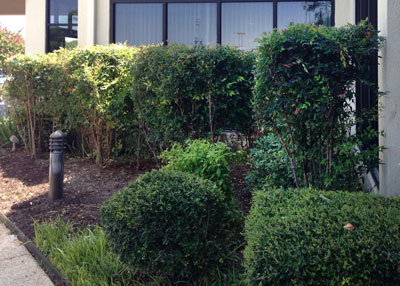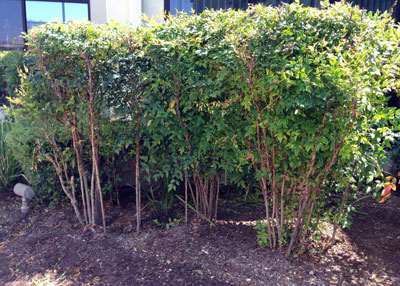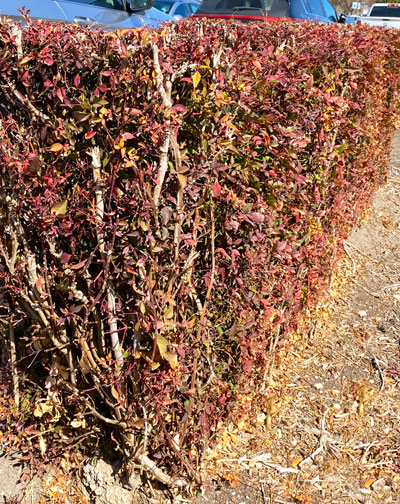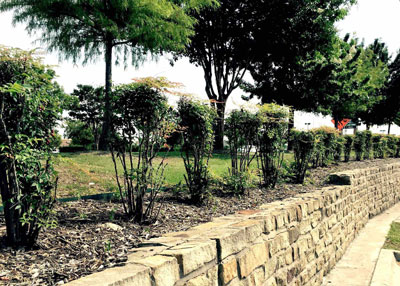It’s Time to Prune Nandinas
We’ve grown them for decades, from the standard Nandina domestica (“heavenly bamboo”) and its shorter “Compacta” form to the many new selections.
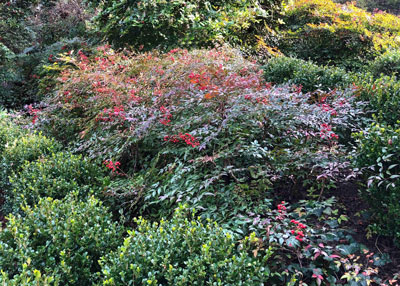
The one thing all of the taller types have in common is that they display their leaves on straight, upright stems. While the temptation might be to shear them into cubes or globes like so many of us do to all of our other plants, that spells disaster for these odd little growers.
The problem is that nandinas don’t really have much of a way to send out side branches when they’ve been cut. They end up looking like little palm trees, and it’s not a comfortable look in the landscape. They get bare at their bases and the plantings get downright unsightly.
So, what’s a gardener to do? How can you keep nandinas full and compact, handsome from the ground to their tops?
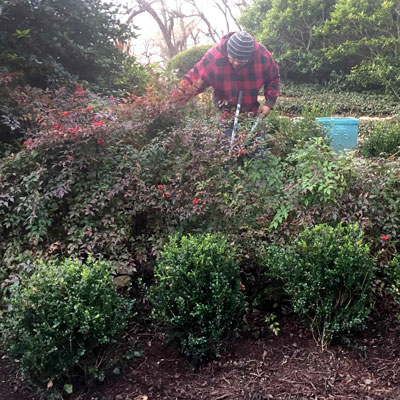
Odd as it may seem, you cut their stems clear to the ground. Use lopping shears, and every winter about now you trim any tall stragglers out first. Remember: cut them clear to the ground. They’ll send out vigorous new shoots to keep their bases full and lush.
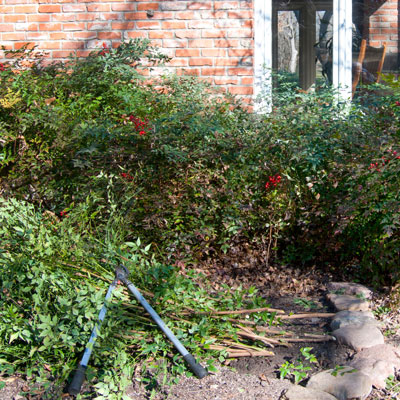
I normally aim to remove the tallest one-third to one-half of the canes on my nandinas late each winter. The following winter I’ll repeat, so that every two or three winters every cane will get to start over. It’s amazing how nicely it works.
If you have a planting that’s been pruned improperly recently, your best way out will probably be to prune more aggressively. Perhaps you trim almost all of the tall canes. You won’t kill the planting. Nandinas are more durable than that. You’ll be amazed at how great the new growth will look.
Follow the pruning up with an application of an all-nitrogen, high-quality lawn food applied in early or mid-March to take advantage of the burst of new growth and your nandinas will be off to the races.
A warning of note: Nandina berries can be harmful to migrating birds. They’re attracted to them, notably cedar waxwings and robins. Their digestive systems can’t process them, and it’s been documented that many have died. To prevent those losses of birds and to avoid unwanted seedlings, it’s a good idea to use your loppers to remove the fruit clusters before the birds start to feed. You get to enjoy them all winter, yet they don’t cause a problem. (Not all selections of nandinas produce fruit, if that’s a big concern for you.)
Hall of Shame
Here are four examples of horrific pruning of nandinas. We can do better than this!
